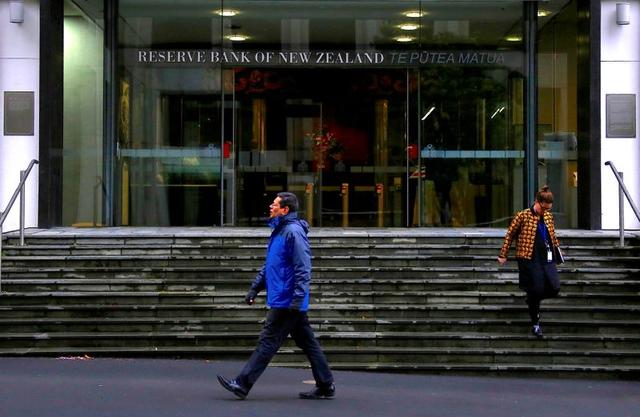
(Reuters) – New Zealand’s central bank introduced a new funding programme on Wednesday that would reduce costs for lenders, while holding its benchmark interest rate at record lows and signaling its readiness to shift to negative rates to support the economy.
The Reserve Bank of New Zealand (RBNZ) held the official cash rate (OCR) steady at 0.25%, as markets expected, and re-iterated rates would stay there until March 2021.
That commitment and the new funding-for-lending programme (FLP) for banks led markets to pare chances of negative rates, sending the New Zealand dollar NZD=D3 to the highest since March 2019 at $0.6884.
Government bonds sold off, too, with five-year yields NZ5YT=RR up 10 basis points at 0.3% from Tuesday. The bank also retained its large scale asset purchase (LSAP) programme at NZ$100 billion ($66.32 billion).
In a news conference, Governor Adrian Orr said the lending scheme to be launched in December would likely have a greater impact on rates than cutting the OCR to 0.1. The size of the programme is estimated to be about NZ$28 billion ($19.31 billion) based on take up, and Orr said reducing banks’ funding costs would encourage them to offer cheaper loans.
He said it was “too early to tell” if the possibility of negative rates had now decreased. And he left the door ajar for further stimulus given the unemployment rate was expected to rise from 5.3% now and inflation was projected to undershoot the RBNZ’s target range.
“The Committee agreed that monetary policy will need to remain stimulatory for a long time to meet the consumer price inflation and employment remit, and that it must remain prepared to provide additional support if necessary,” the RBNZ said in a post-meeting statement.
The RBNZ said earlier on Wednesday that it would consult next month on whether to reintroduce limits on the amount of “high-risk lending” banks can make, amid growing concerns of a housing bubble.
New Zealand fell into its deepest economic recession on record in the second quarter, but markets now believe further stimulus may not be necessary as the government has reopened the economy after containing the coronavirus.
Further, the RBNZ upgraded its quarterly GDP forecast substantially to 13.4% in the last quarter, while unemployment is now seen peaking at 6.4% in June next year from 8.1% forecasted previously.
“The Reserve Bank did keep open the option for the cash rate to go negative eventually but we think the overall stance…suggests it is now far less certain of the efficacy of heading in this direction,” said Stephen Toplis, head of research at BNZ.
“The RBNZ still thinks the risks to the outlook are weighted to the downside but they clearly recognize that the economy is evolving better than they had anticipated.”





